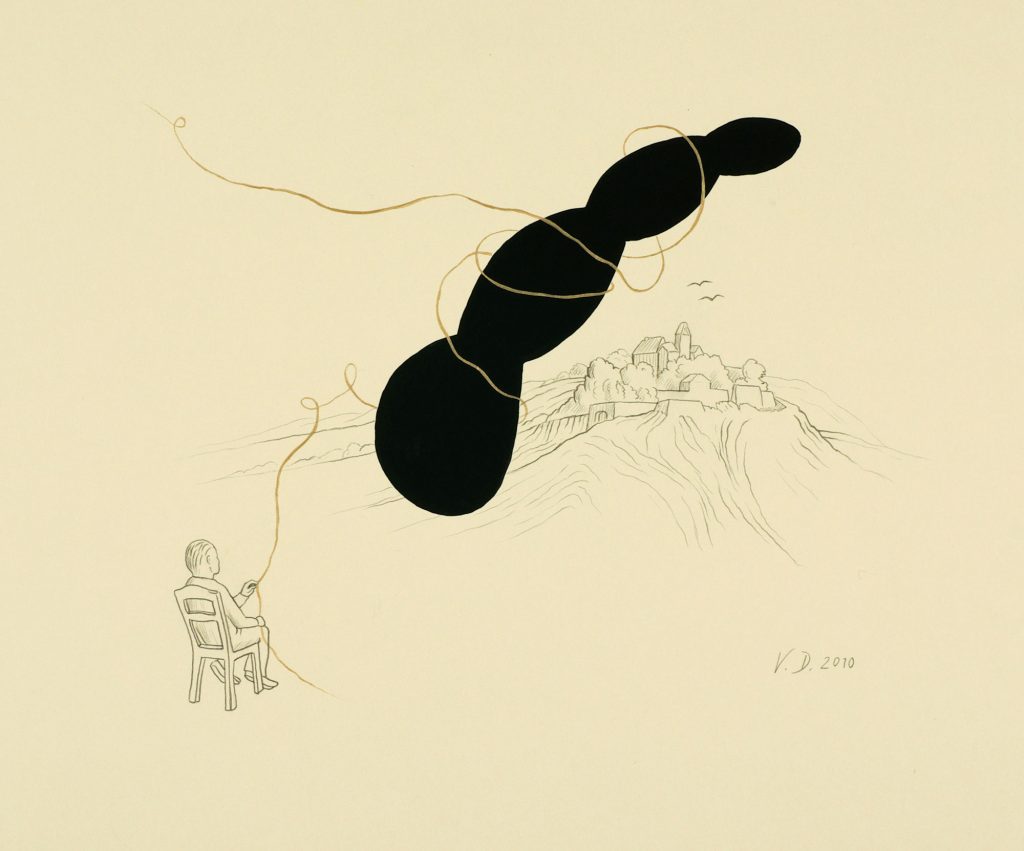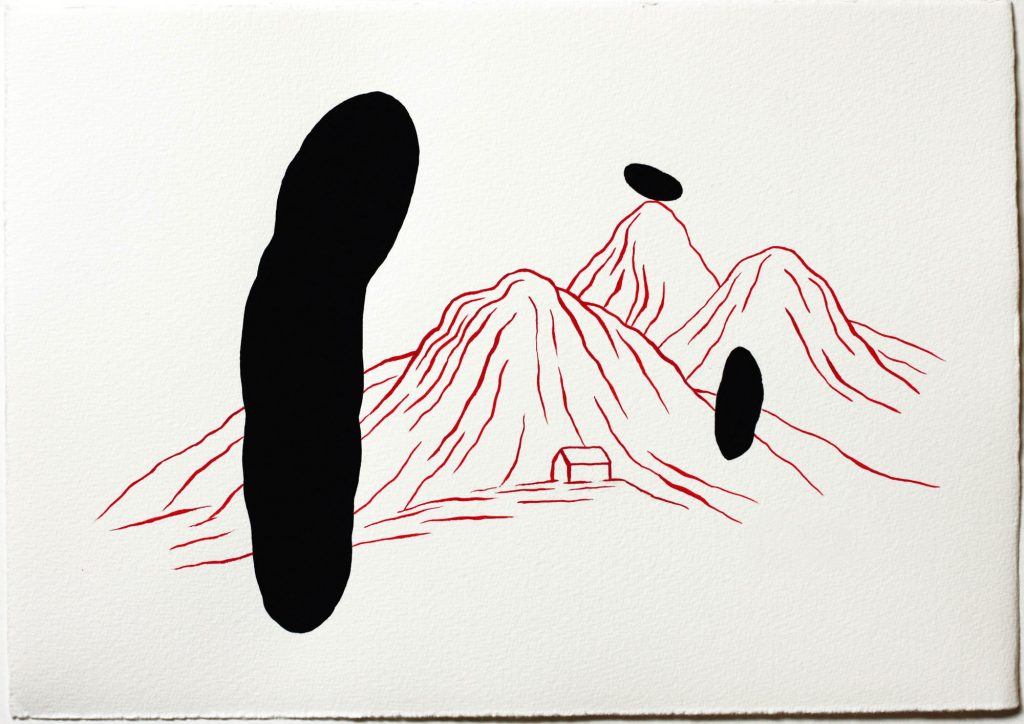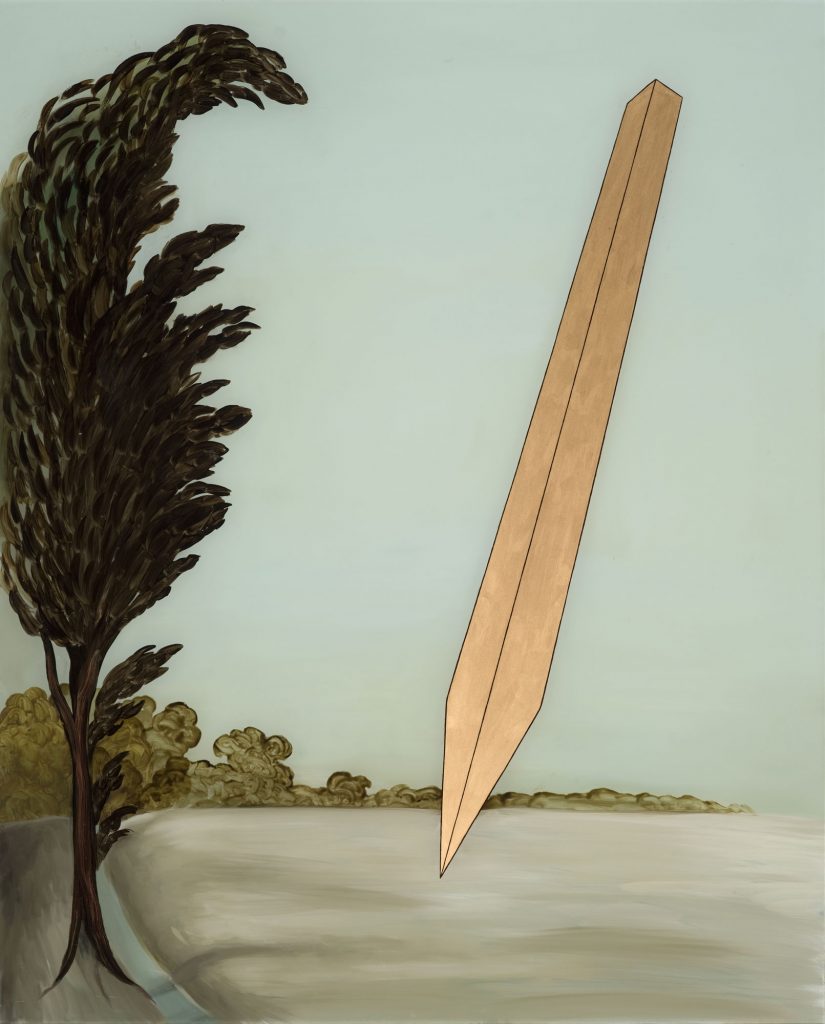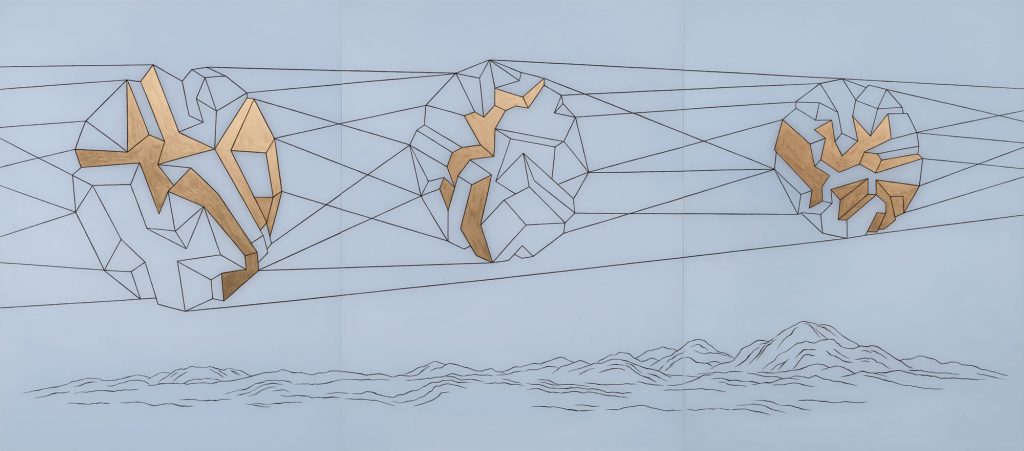Alejandro Perdomo Daniels 2020
Veronika Dobers Between Time and Eternity
A key issue of philosophy are questions on the essence, limitations, conditions, and criteria of perception. It has to consider if humans are able to grasp the reality of the world through their sensory perception so that they can obtain certain evidence. Or if, on the contrary, reason can be the only source of knowledge. A discussion that Kant influenced strongly. In his transcendental philosophy he showed that the true nature of things in the sensory world cannot be apprehended by human perception. According to the philosopher the world can be experienced via stems of knowledge – sensibility and understanding–, but humans cannot really penetrate them. “Beyond the horizon” is what Veronika Dobers calls this fundamental inaccessibility. She explains:
“The horizon is the boundary between the visible world and the sky. Beyond this line the world continues invisible to the eye. In my mind there is my own construction, my interpretation of the ‘real’ world. I only recognize what I am able to see. I am able to see what I know. My thoughts and imaginations, my intellectual background create the world. I became familiar with this world but I wonder whether there could be more behind the wall of imaginations, beliefs and prejudices.”
This epistemological approach defines the reflection fields in which Veronika Dobers’ works operate.This has increased visibly since 2010 to be seen especially in the eight image series Gedankenspiele (mixed media on cardboard, 2010). A cycle that elaborates on the relationship between reality and imagination. In accordance with its stylistic language, this series can clearly be assigned to figuration. The elements in the pictures show characteristics related to images of things or entities from the sensory world or they function as a visual objectification of abstract ideas. The forms that are placed on an extensive background are clearly structured and form a system of inherent relationships which are laid out to create meaningful contexts. Every picture consists of individual motives that constitute a meaning in their specificity, which correlate as a semantic unity with the respective meaning of the other motives. The space in the picture does not display a coherent scene which corresponds to the reality of the outside world, but an abstract area on which semiotic correlations take place. Thus, concerning their content-related constitution the pictures have their own syntax, semantics and pragmatism providing a basis for philosophical reflection.Alejandro Perdomo Daniels 2020

In Gedankenspiel Nr. 1, a central piece of the series, the artist approaches the epistemological problem by illustrating its paradoxes. Between a clearly contoured image that shows a figure sitting on a chair holding an open book and the simplistic depiction of a distant landscape stands an enormous bundle, an amorphous and at the same time clearly defined shape whose content evades every experience. Suggesting a metaphysical situation, it projects a black duplication of itself into the empty room, a pitch-dark silhouette that stands for thoughts and imaginations in the iconography of the artist. In accordance with the meaning of the motives that can be derived either from the imaging units or from Dobers‘ iconographic conventions, the entire image configuration refers to the tension that the factors of perception – man, learned knowledge, the world of ideas and the outside world – create. Without giving a definite answer the picture shows the impossibility of unrestricted knowledge. This imperfectability is expressed in Gedankenspiel# 3 in a very poetic way. In this picture, whose structure is similar to the first, the person is holding a golden thread instead of a book in his hand with which he tries to encircle the image of the absent bundle, symbolized by a black silhouette.

In the series The Unknown (gouache on water colour paper) the artist focusses on the relationship between thoughts and the world including man. The former function as an autonomous force equal to the reality of the outside world. Physically displayed as black silhouettes, the thoughts appear as entities on the world as if they were creating the latter. In Drei Gedanken in einer Landschaft they face, in a colossal shape, a mountainous landscape, in which the existence of humans as real actors is located in a tiny house. Other works like Teile dessen, was wir nie erfahren werden, Plan or Suche nach Erkenntnis seem to substantiate the postulate that thoughts as physical matter have the same level of reality as their creators so that both forms of existence are in balance with the world of experience.
The cycle Beyond the horizon (reverse painting on acrylic glass, 2012-18) is connected formally and also content-related with the series Gedankenspielen, whereby the artist brings in another material element, expanding the semiotic dimension of the works in compliance with their philosophical content. Veronika Dobers achieves this through reverse glass painting. A traditional painting technique with which she creates a connection between material, form, and content. This technique is an image creating procedure in which the back of a transparent glass – or acrylic glass – plate is covered with opaque colours. Image carrier and image surface form a material unit which – like a window – separates the sphere of reality of the beholder from the one of the picture. Depending on the situation of perception the viewer can either see his reflection in the glass or look into the inner picture world. This creates an unstable perceptual moment in which the artist resorts to the epistemological substance of the cycle. The triptych here expresses the sense of this ambivalence pointedly. In this work the artist integrates words in the intrapictorial reality which complies with the use of picture motives as a pragmatical connection between form and meaning. While on the right wing of the triptych the English word “here” stands out iconically in the picture center, the left wing shows the same word in reverse. In the central image a golden wedge encounters a schematic mountain scenery. Their proportions let the latter appear at a far distance, a distance on the other side of the glass from which the left panel can be read like the beholder can read the right panel on this side. In it you can see an objectification of a metaphor for perception which says recognition depends on the position of the viewer.

Between Time and Eternity (reverse painting on acrylic glass, 2015-18) is the title of the latest series of Veronika Dobers. A poetic title that goes back to a phrase from Hermann Hesse’s novel Peter Camenzind (1904):
“And as the clouds are suspended faintheartedly and longingly and stubbornly between heaven and earth, the souls of men are suspended faintheartedly and longingly and stubbornly between time and eternity.”
This reference already prefigures the influence of the cycle. Even though it deals with epistemological considerations like the other series, its execution is significantly more metaphorical and poetic than in Dober’s other works. Atmospheric sceneries have clearly identifiable motives that relate to each other seemingly enigmatic but with a reference to a meaning yet to be deciphered. This results – as in the entire oeuvre of the artist – from the interrelation between private symbolism and obvious connotations that are implied in familiar motives. In contrast to the other series, the space in this cycle represents a stage on which moments can be identified. Thus the picture Abrupt shows exemplarily an atmospheric landscape in which a golden pillar-type shape in the firmament suddenly appears out of the oblivion, like an idea out of which some insight emerges. In this way the cycle brings about the question, how the reality of the world is received back to its initial foundation: the empirical encounter between the relentless temporality of man and the unbridgeable inaccessibility of reality. Falling back on this fundus in which the own subjectivity of the self is anchored, the artist displays free reflections on reality and perception by the means of art without committing herself to the normativity of valid arguments or the adoption of a philosophical truth. It is here, in the informality of connecting with philosophy, art, reality, and perception that Veronika Dobers’s work is unique.
